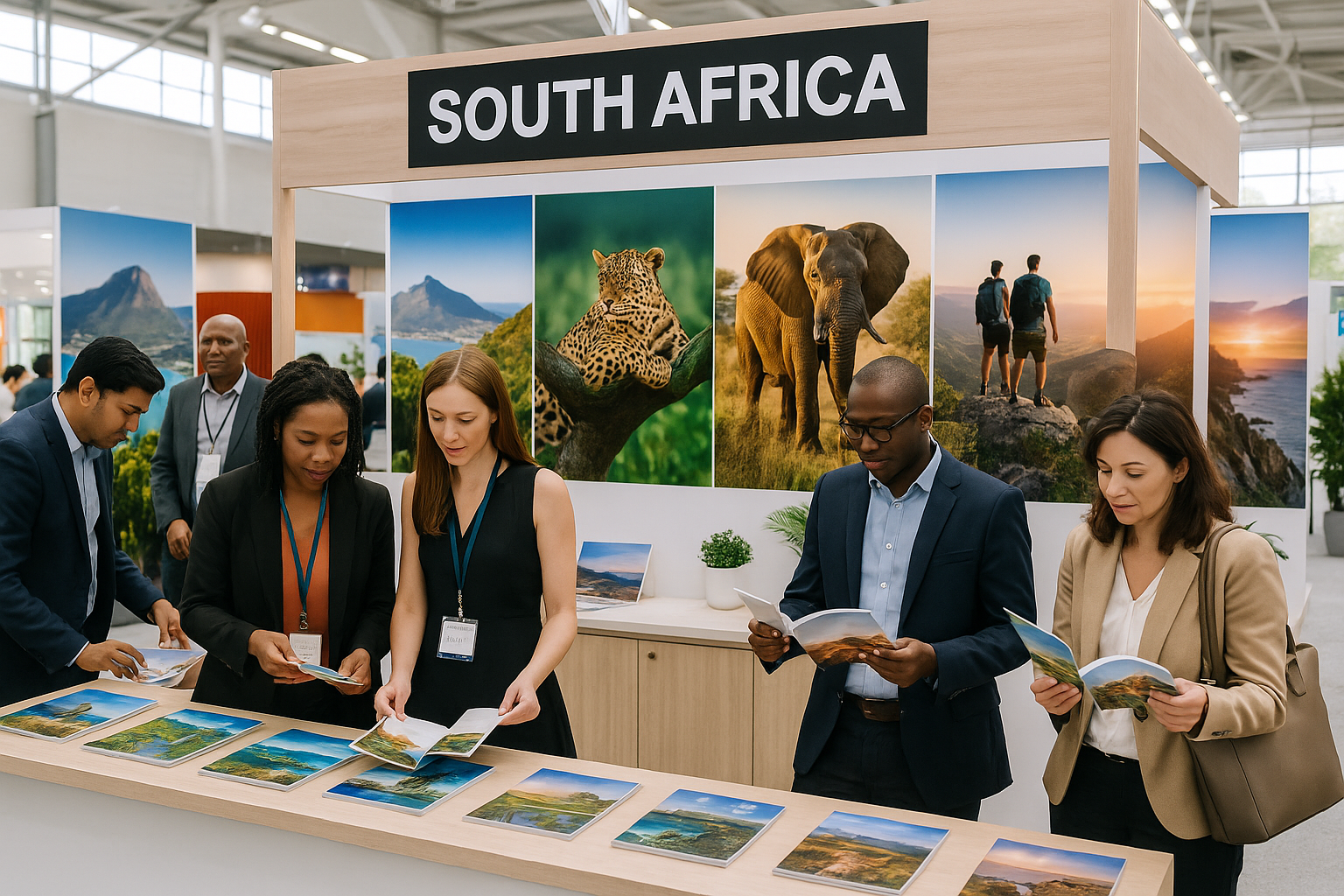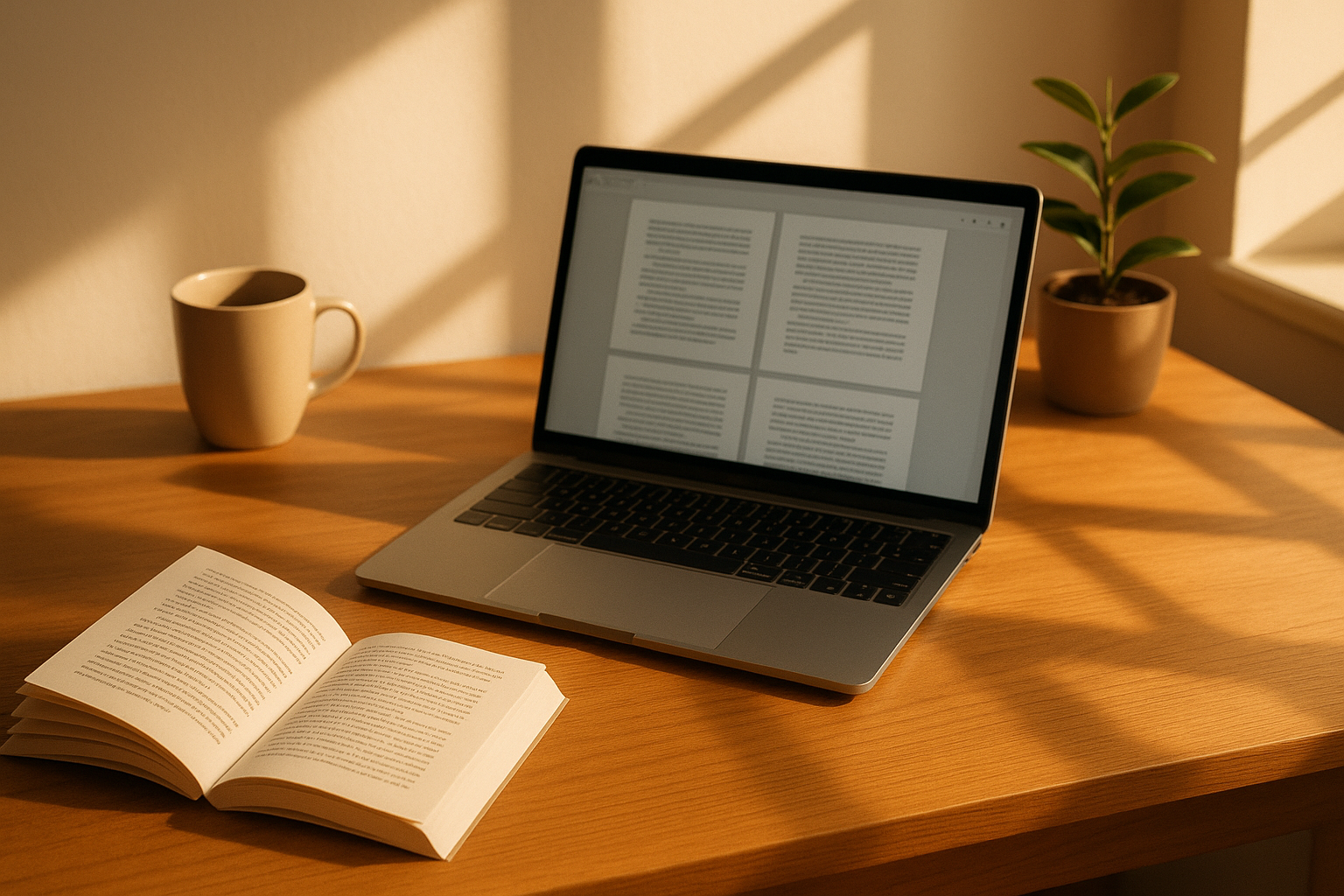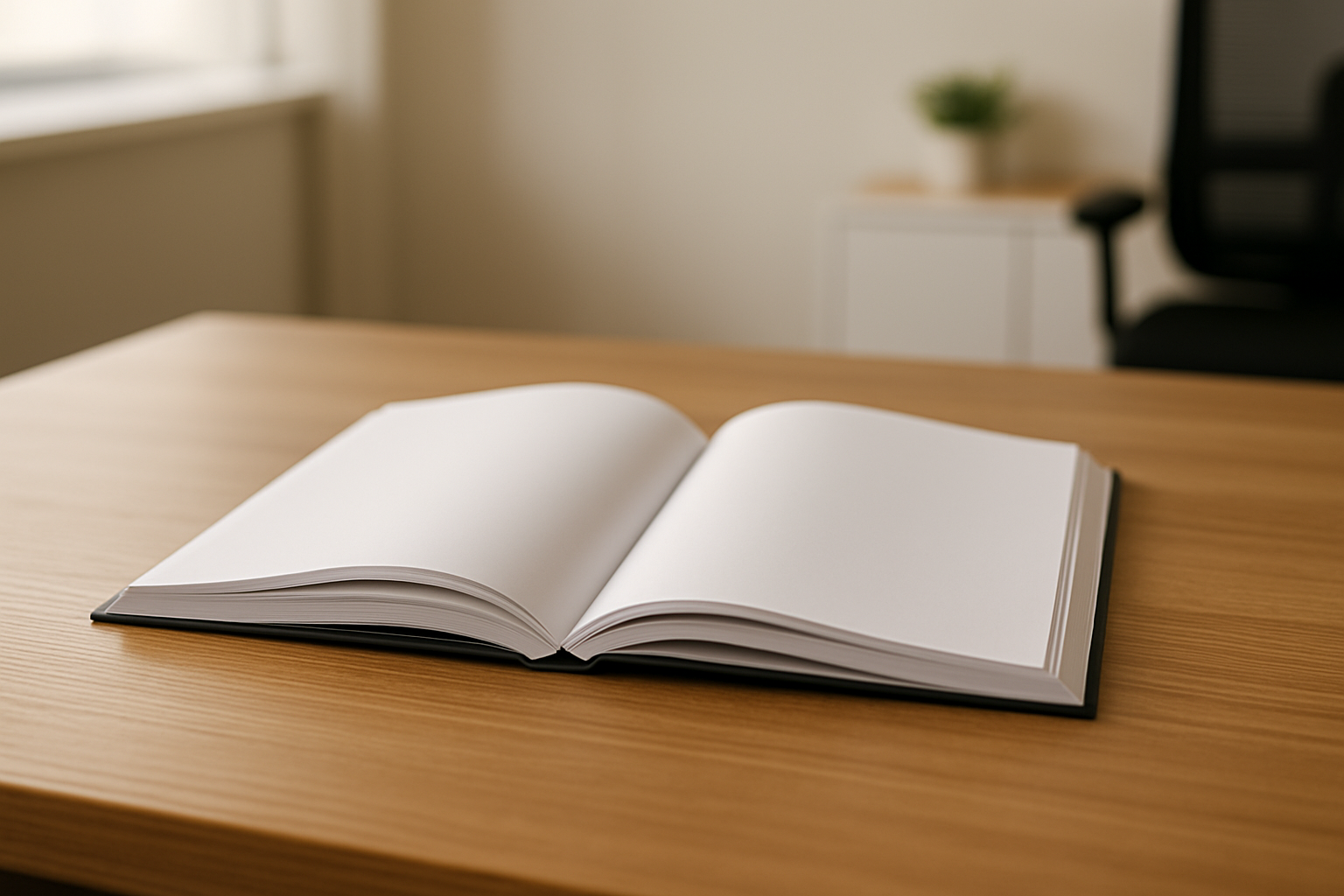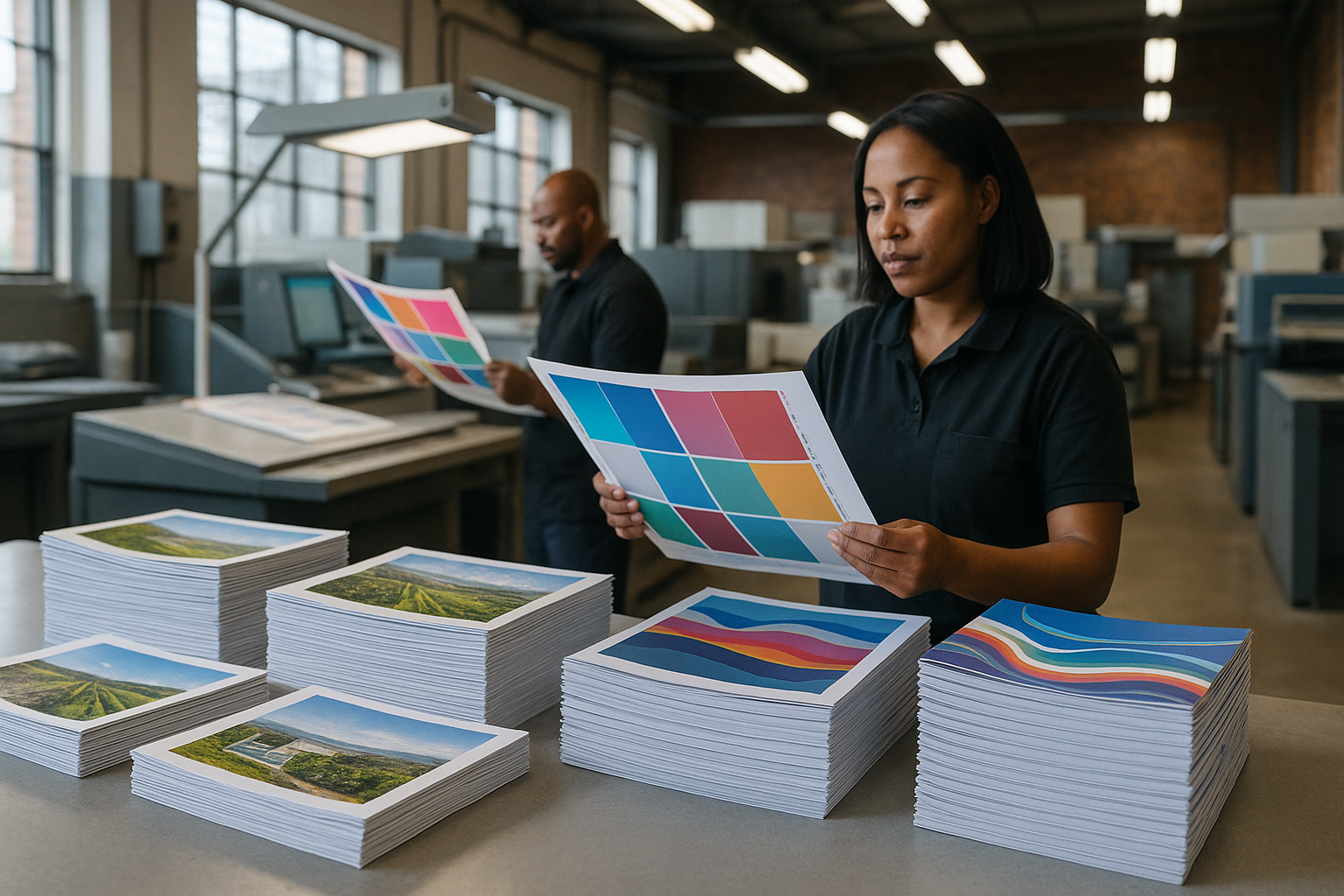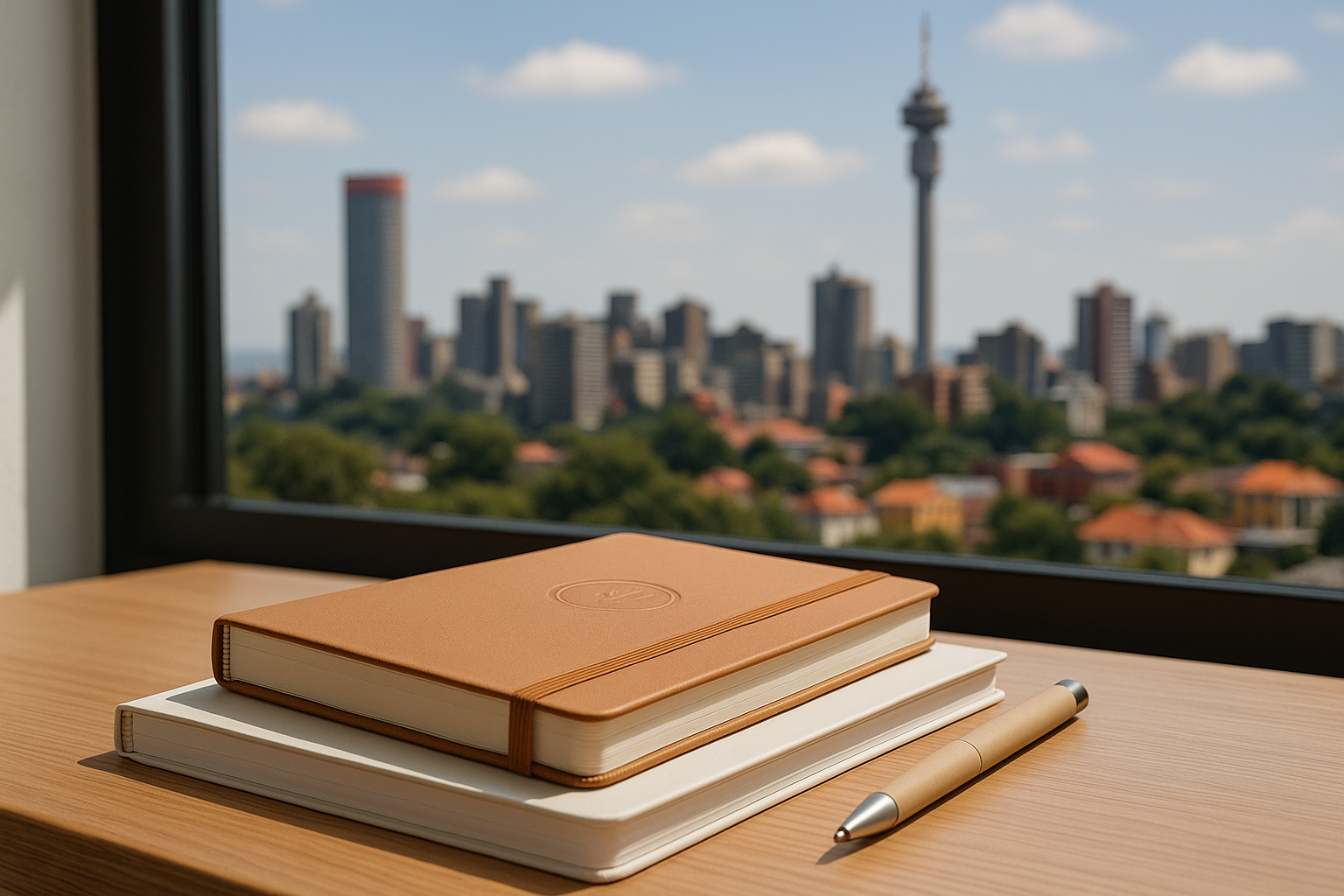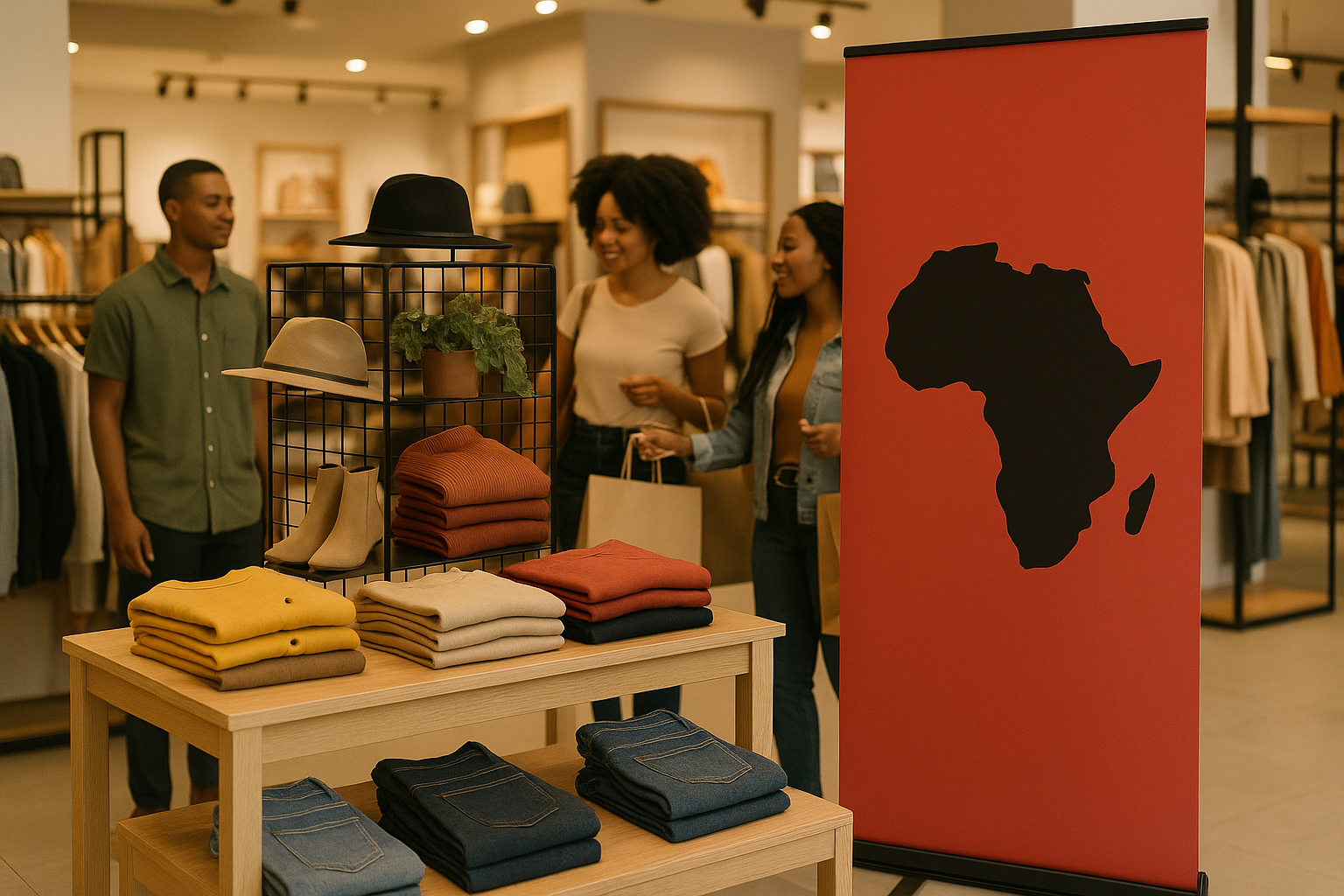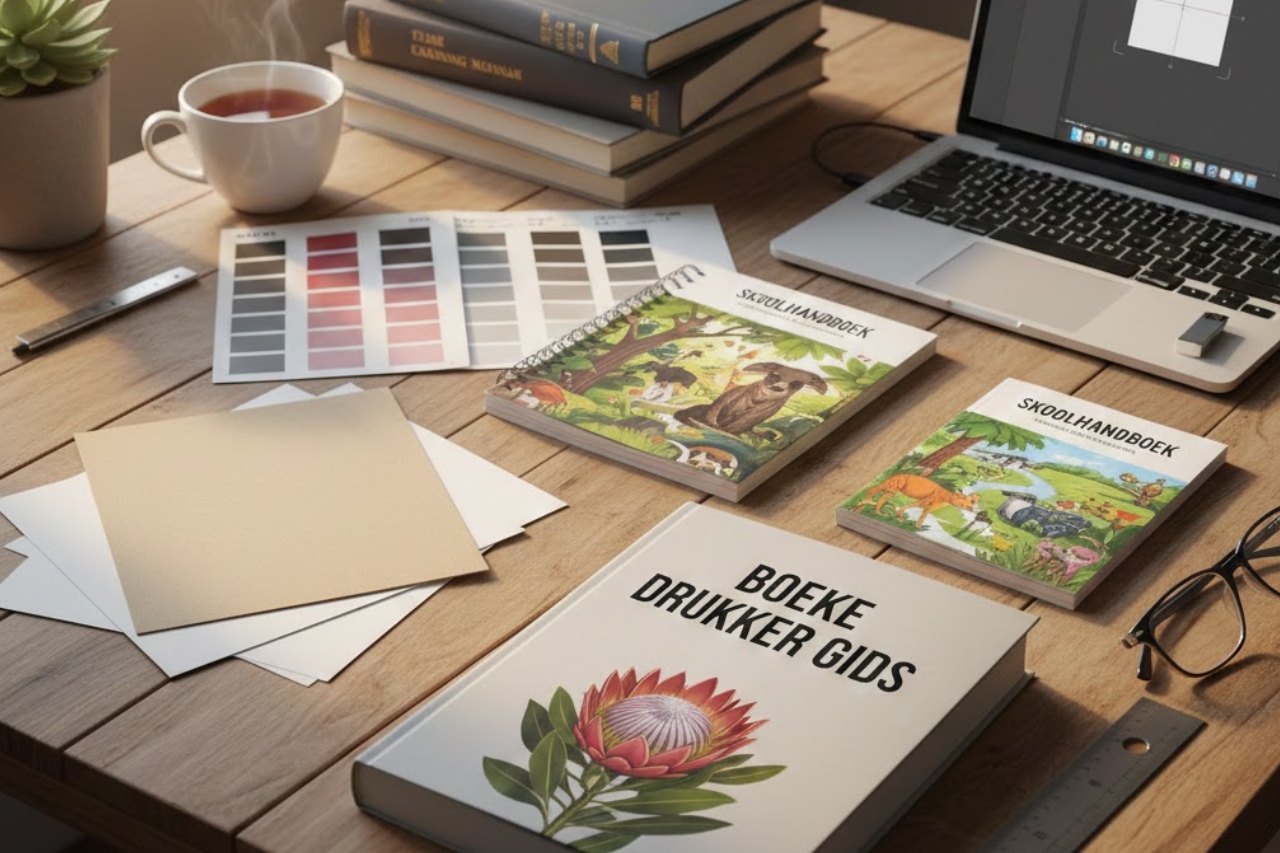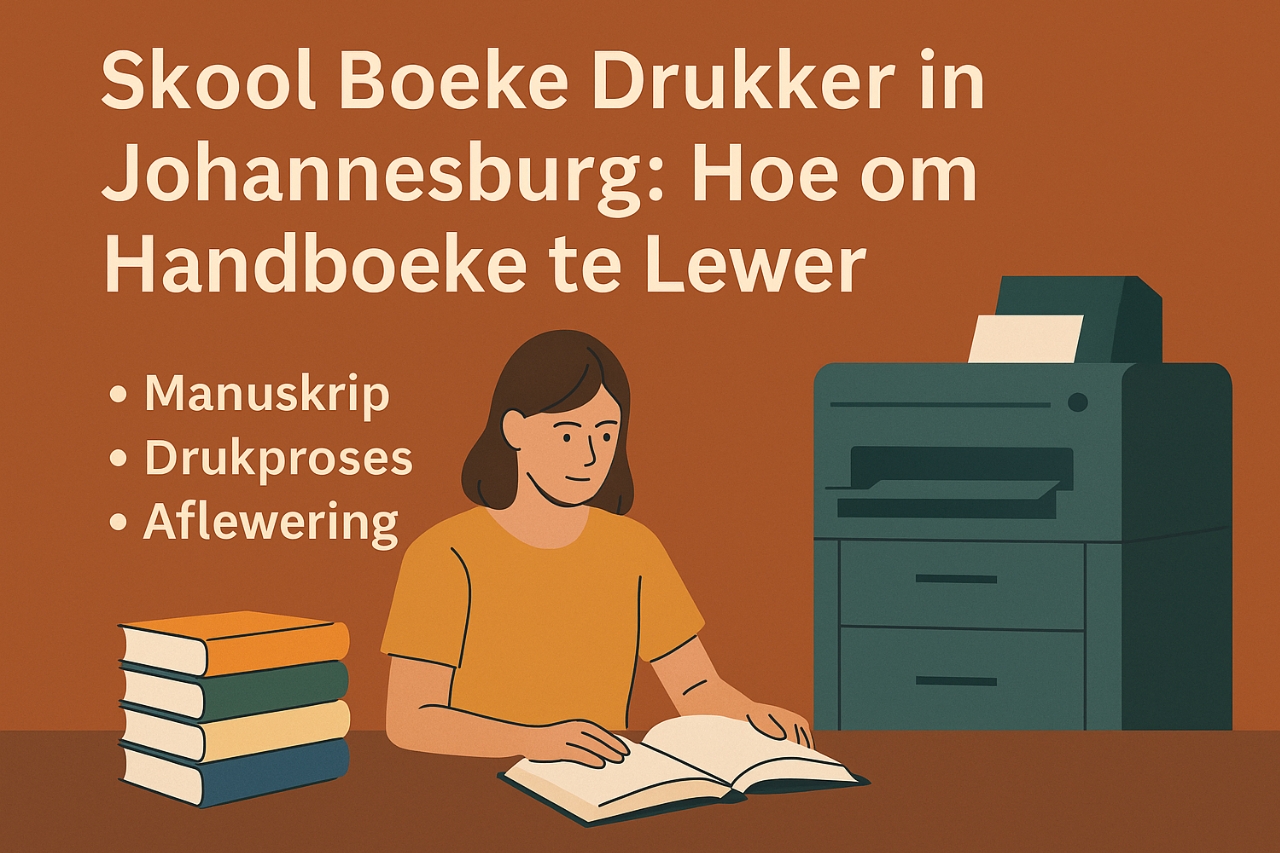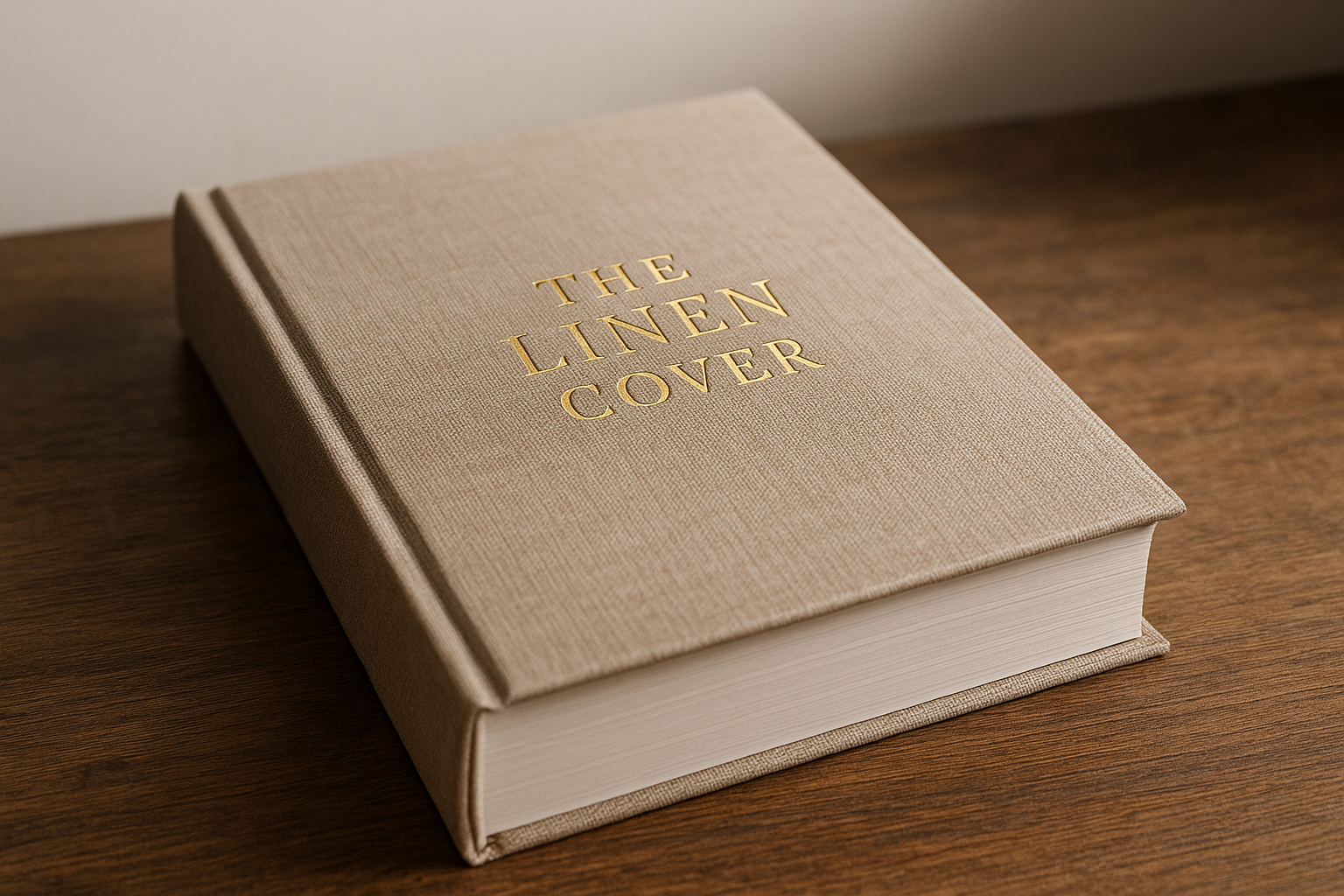Printed Marketing Material is a cornerstone of successful events and trade shows — whether you’re distributing brochures at a business expo, printing training manuals for a workshop, or supplying bulk educational printing for schools across South Africa. This practical checklist walks small businesses, schools and exhibition organisers through planning, production and delivery so your printed materials arrive on time, on budget and on brand.
1. What print marketing material should I prepare for an event or trade show?
Start by listing the core items attendees expect and that support your campaign goals. Typical print marketing material includes brochures, catalogues, booklets, posters, banners, business cards, flyers, and promotional leaflets. For educational events or school promotions, add training manuals and bulk textbook handouts.
Decide by objective: lead capture needs business cards and simple one-sheet flyers; product demonstrations benefit from catalogues and laminated spec-sheets; training workshops require bespoke training manuals and booklets. In the South African context, commercial printing houses often combine litho and digital printing to match run lengths — use litho for large runs and digital print-on-demand for last-minute updates.
- Brochures and booklets — information-rich and ideal for handing out at stands. (See brochure printing services and booklet printing.)
- Catalogues — product lines, pricing and order forms for trade buyers. (See catalogue printing.)
- Business cards — essential for networking and follow-ups.
- Posters, banners and signage — high-visibility wayfinding and branding.
- Training manuals and handouts — mandatory for workshops and educational sessions. (See training manual printing and textbook printing.)
Plan a balanced mix so you have something for quick takeaways and something deeper for interested prospects.
2. How do I design effective Print Marketing Material for events?
Design should balance clarity, brand consistency and usability. For trade shows, your materials must communicate quickly at glance while offering deeper content when attendees engage further. Use bold headlines, high-contrast colours, and clear calls-to-action. Include your stand number, contact details, and QR codes for digital follow-up or catalogues.
Design best practices include consistent typography across brochures and booklets, high-resolution images (300 dpi for print), and bleed margins for trimming. For educational printing like school textbook printing or training manuals, prioritise legibility with larger fonts, clear headings and durable binding.
- Front-loading key messages and benefits.
- Using shorter paragraphs and bullet lists for scanability.
- Including production notes: CMYK vs RGB, pantone matches, and finish choices.
3. What sizes, paper stocks and finishes work best for Print Marketing Material?
Choosing paper weight and finishes affects cost, appearance and durability. Standard brochure sizes (A4 tri-fold, A5, DL) are economical. For catalogues and booklets, 80–128gsm for inside pages and 250–350gsm for covers is typical. For outdoor banners and wayfinding, PVC or vinyl with UV lamination is usual.
Finishes like matt, gloss, soft-touch, UV spot or aqueous coating add tactile appeal and protect prints. Eco-friendly options — recycled stocks and eco inks — are increasingly available in South Africa and can be highlighted on materials to reinforce sustainability commitments.
| Item | Typical Stock | Suggested Finish |
| Brochure (A4/A5) | 130–170gsm paper; 250–350gsm cover | Gloss or matt aqueous; spot UV for logo |
| Booklet / Catalogue | 70–120gsm text; 200–350gsm cover | Matt or gloss lamination; stitched or perfect bound |
| Business Cards | 300–450gsm | Soft-touch or spot UV |
| Poster / Banner | 150–350gsm paper or vinyl | Outdoor lamination or PVC |
Discuss specifics with your commercial printer — they can suggest cost-effective trade-offs like aqueous coating instead of lamination for similar protection at lower cost.
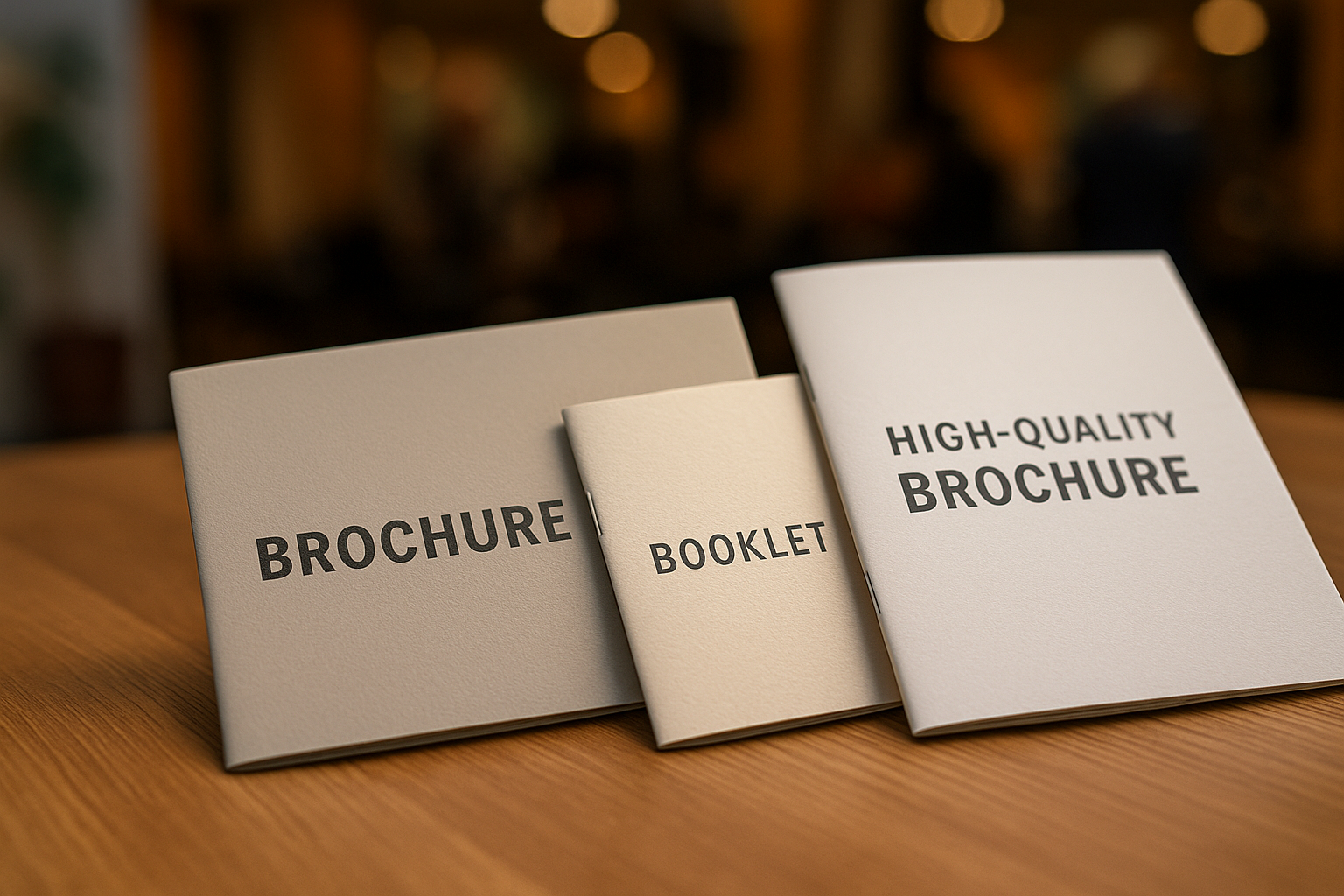
4. How many copies should I order — estimating print quantities and budgets?
Quantities depend on event size, expected footfall and distribution strategy. As a rule of thumb, order one brochure per 3–5 attendees and one business card per staff member times expected conversations. For trade buyers, increase catalogue runs because these often remain as reference material.
Small businesses benefit from combining litho for bulk runs with digital print-on-demand for last-minute top-ups, reducing waste and upfront costs. For schools or training organisations ordering bulk educational printing for terms, plan ahead to leverage volume discounts and ensure fast turnaround printing before term starts.
- Estimate conservative, realistic and optimistic attendance scenarios.
- Factor in giveaways, demo copies, and press packs.
- Allow 5–10% overage for damaged or misplaced inventory.
According to Statista, the global printing market was valued at around $400 billion in recent years — high production volumes continue to support economies of scale for print runs.
5. What turnaround times should I expect for event print jobs in South Africa?
Turnaround depends on run size, finishing complexity and location. Small runs (up to a few hundred brochures) can be produced digitally in 3 to 5 business days. Larger litho runs or finishes like foil blocking may take 5–10 business days. For nationwide delivery across South Africa, add 1–3 days depending on courier routing and rural delivery times.
Fast turnaround printing services are offered by many commercial printers who prioritise event deadlines; for critical deadlines, request proofs and confirm delivery windows in writing. Keep a contingency buffer: projects often need last-minute copy or artwork tweaks.
6. How can I reduce costs while maintaining quality for Print Marketing Material?
Cost-saving strategies include standardising formats, limiting custom-size jobs, using common paper stocks across items, and selecting efficient print processes for each run size (digital for small, litho for large). Working with a printer that offers print-on-demand can avoid large upfront inventories and reduce waste.
Other savings: use two-sided printing, avoid heavy spot colours unless brand-critical, and choose economical finishes like aqueous coating over more expensive lamination. Many South African printers provide bundled packages for trade shows that include banners, flyers and business cards at discounted rates.
- Plan seasonally — school term preparation often unlocks bulk discounts with education-printing providers.
- Compare quotes from commercial printers and include delivery, proofs and finishing in the estimate.
7. What eco-friendly options exist for event print marketing?
Eco-conscious printing choices are growing: recycled or FSC-certified papers, soy- or eco inks, waterless printing technologies and eco-friendly finishes. These options lower environmental impact and resonate with audiences, especially at education-focused events and sustainability-themed trade shows.
When choosing eco-options, ask printers for certification, percent recycled content, and the recyclability of finishes. Some finishes impede recycling; choose aqueous coatings over UV laminates when recycling at end-of-life is important.
According to South African education and procurement initiatives, many institutions encourage sustainable suppliers for bulk educational printing and school textbook printing, making eco-options both ethically and commercially valuable.
8. How do I handle delivery and logistics of Print Marketing Material across South Africa?
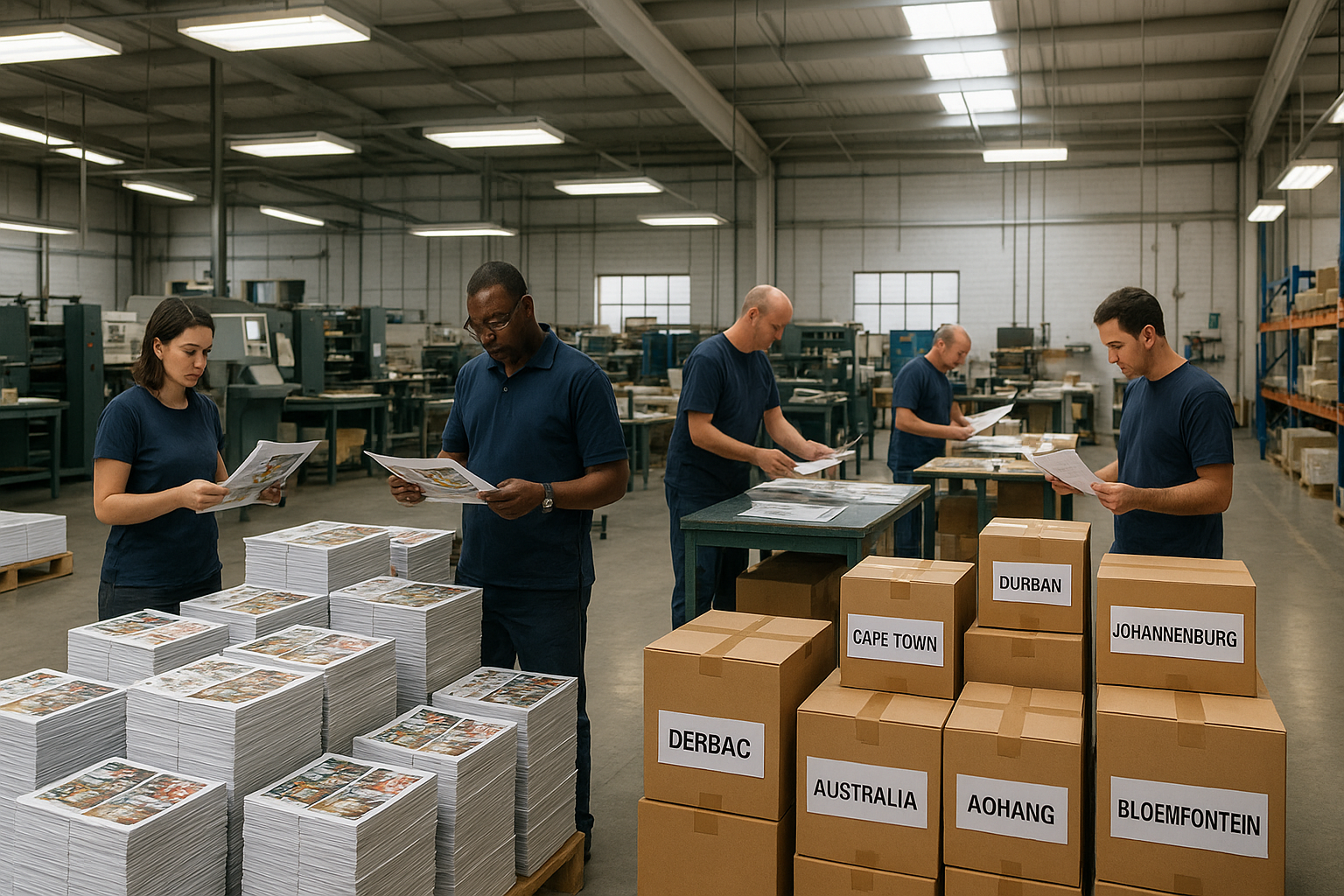
Plan delivery well in advance and confirm whether the printer offers direct shipping to event venues. For events in major cities, next-day courier delivery is usually available; for remote venues, allow extra days. If you’re distributing multiple items (catalogues, banners, sample products), consolidate shipments to reduce handling and costs.
Provide the printer with venue receiving hours, contact person, stand number, and any access restrictions. For educational institutions requiring bulk delivery to schools, coordinate with school administrators and align with term calendars to ensure timely receipt.
- Use tracked freight for valuable or time-sensitive materials.
- Get proof of delivery and retention of a few spare copies at the printer for emergencies.
9. What are common mistakes to avoid with Print Marketing Material at trade shows?
Common missteps include missing deadlines, ordering wrong quantities, using low-resolution images, forgetting bleed and trim areas, and neglecting to proofread. Overdesigning can also hurt: too much text or complex layouts make materials unreadable at a glance.
Other pitfalls: relying solely on digital assets without print backups, not testing QR codes or URLs, and failing to include stand numbers. For educational printing, ensure ISBNs, edition numbers and teacher guides are accurate to avoid costly reprints.
- Always request a printed proof or press proof for colour-critical jobs.
- Enable a sign-off process for final artwork to prevent last-minute changes.
10. How should small businesses and schools choose a printing partner in South Africa?
Choose a partner with experience in commercial printing, educational printing and event work. Look for proof of capability in booklet printing, catalogue printing and brochure printing services. Evaluate their turnaround times, delivery network across South Africa, portfolio, and whether they offer eco-friendly options or custom print finishes.
Ask about print processes (litho vs digital), binding options, and whether they support print-on-demand for last-minute needs. Transparency on pricing, sample materials, and references from other events or schools helps make a confident choice.
- Check case studies for similar events and request sample packs.
- Confirm they can handle combined jobs (e.g., brochures + banners + business cards) to simplify logistics.
For training providers, commercial printers that specialise in education will often offer package deals for bulk educational printing, textbook printing and training manual printing.
11. How can I measure the success of Print Marketing Material after the event?
Measure response and ROI by tracking distribution counts, redeemed offers, QR code scans, unique URLs and incoming leads attributed to printed pieces. Train staff to ask and record how prospects heard about you and capture that data in your CRM. For educational campaigns, track enrolments or information requests linked to printed flyers or booklets.
Combining printed materials with digital follow-up (e.g., a QR code that signs people up for a newsletter) helps quantify direct impact. According to the Centre for Exhibition Industry Research (CEIR), a large share of trade show attendees have buying authority — in many studies, CEIR reports that around 70–80% of attendees influence purchasing decisions — underscoring why measuring printed-campaign conversions at shows matters.
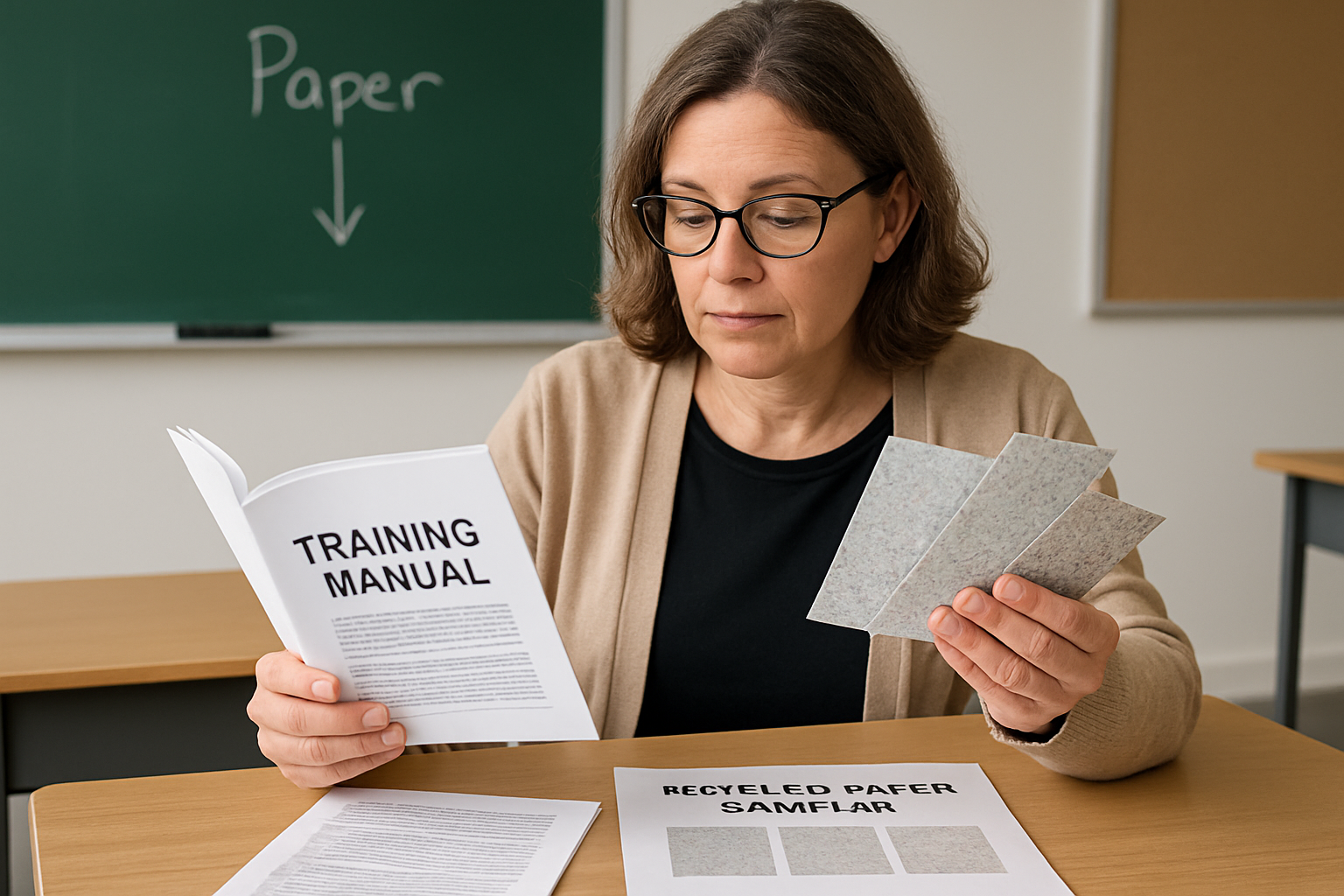
12. Quick checklist: final steps before sending Print Marketing Material to print
Use this short checklist to avoid last-minute problems and ensure quality results. Confirm artwork specs, final proofs, quantities, finishes, binding, and delivery instructions. Verify colour profiles (CMYK), include bleed, set correct DPI and supply fonts or flattened PDFs. Confirm invoicing and delivery expectations with the commercial printer and request an order confirmation.
- Finalise copy and proofread all text; check URLs and QR codes.
- Confirm sizes, paper stocks and finishes; request a paper sample if unsure.
- Obtain a printed proof/press check for colour-critical jobs.
- Confirm production timeline and delivery to the venue or multiple school addresses.
- Retain a small emergency print run or digital files for on-demand top-ups.
According to event industry sources and practical experience in South Africa, leaving at least two weeks for production and shipping (longer for large litho runs or complex finishes) significantly reduces stress and risk. For education and textbook printing, align schedules with school term dates to avoid peak-season delays.
Further reading on trade shows and exhibitions: see the Wikipedia entry on Trade show for an overview of formats and attendee behaviour.
If you need help turning this checklist into a print-ready plan, contact a printer experienced in brochure printing services, catalogue printing, booklet printing and training manual printing — they can map your run sizes, finishes and timelines to an event-ready fulfilment plan.
Print It ZA, we print Marketing Material for all Events and Trade Shows.
Contact Print It ZA today for Printing Best!
